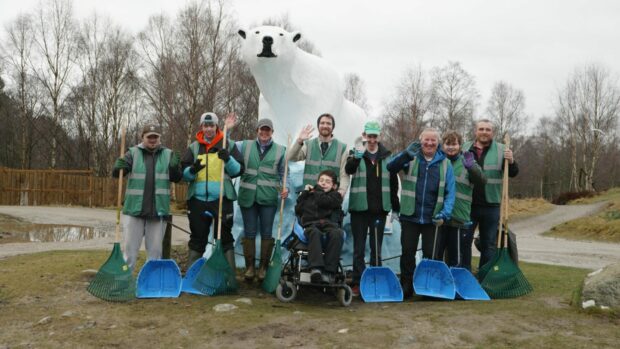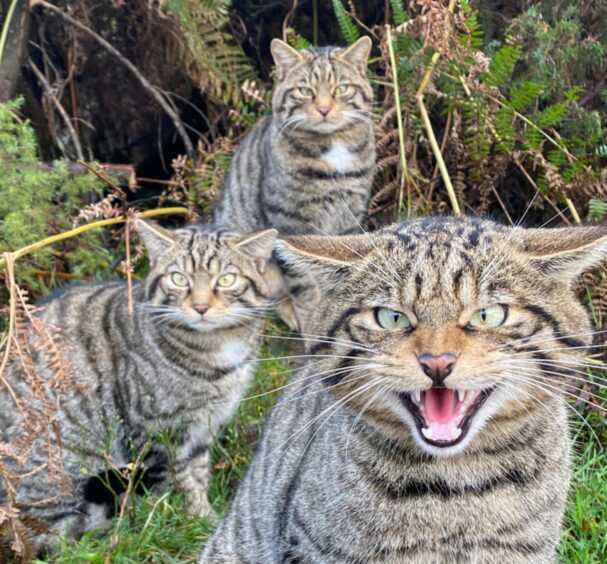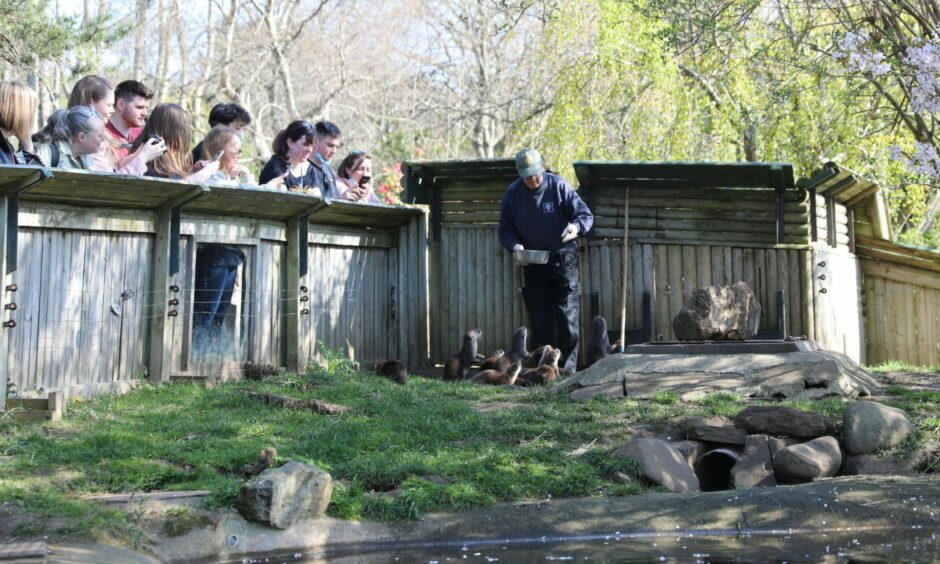An ambitious new goal set by the Royal Zoological Society of Scotland (RZSS) is to reverse the decline of over 50 species in just eight years.
The RZSS, which runs the Highland Wildlife Park and Edinburgh Zoo, aims to recruit more people into the conservation sector.
Several species native to the Highlands face extinction due to habitat loss and human activity, including Scottish wildcats and pine hoverflies.
The Highland Wildlife Park near Kingussie has led a successful Scottish wildcat breeding programme, classed as critically endangered.
The Saving Wildcats project has helped boost the number of Highland tigers, releasing them back into the wild at designated locations around the Cairngorms.
During this breeding season, the programme has produced eight new kittens that could help repopulate habitats in the region.
In addition to native Scottish species, the RZSS will also collaborate with international partners on protecting species such as armadillos, anteaters and chimpanzees.
While over one million species worldwide are in danger of disappearing, the RZSS has pledged to reverse the fortunes of 50 species by 2030.
Highland Wildlife Park and Edinburgh Zoo have conservation projects that allow the public to understand the difficulties facing endangered species and do their bit to help.
The charity says that both sites represent “gateways to the natural world”.
‘Create a world where nature is protected, valued and loved’
RZSS chief executive, David Field, said: “The Royal Zoological Society of Scotland has an important role to play because our teams have incredible expertise in conservation science and animal care.
“An example is the ground-breaking Saving Wildcats project we are leading at Highland Wildlife Park, working with national and international partners to restore Scotland’s critically endangered wildcat population by breeding and releasing wildcats into carefully selected locations in the Cairngorms National Park.
“We pledge to reverse the decline of at least 50 species by 2030, including wildcats, pine hoverflies and pond mud snails in Scotland. We will also develop plans to protect other native Scottish species.
RZSS pledges to repopulate 50 species including Scottish wildcats
“Internationally, the species we are working with partners to protect include chimpanzees in Uganda, giant anteaters and giant armadillos in Brazil and Pallas’s cats in Central Asia.”
“People protect and value what they love and understand, so experiencing nature in person is incredibly important.”
The approach by RZSS also recognises the vital role zoos have in strengthening communities.
The hope is that both RZSS sites and outreach programmes will bring together over a million people in a community committed to protecting wildlife.
Mr Field added: “Nature needs us all more than ever, and stronger communities have a greater capacity to care for wildlife.
“Zoos are in a unique position to help people realise the mental and physical health and wellbeing benefits of being close to wildlife.
“Together, we can help create a world where nature is protected, valued and loved.”


